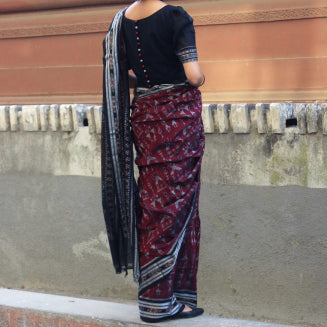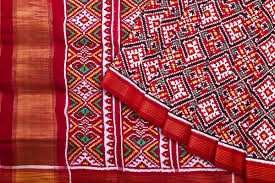Ikat sarees are famous for their unparalleled beauty, and rightly so. The complex process of weaving an Ikat saree accentuates the grace of the wearer.
The weaving of Ikat is different from various other resist dyeings as for Ikat weaves, the yarn is dyed first and then weaved. Whereas in batik and bandhani, the fabric is dyed after weaving.


Types of Ikat Weaves
Ikat weaves differ from one another depending on whether the warp, the weft, or both are dyed. The types of Ikat weaves are:
Warp Ikat
In a warp Ikat weave, the warp yarns are Ikat dyed and weft yarns are given a solid color to compliment the warp pattern.


Weft Ikat
A weft Ikat weave is characterized by the dying of the weft yarn. Whereas the warp yarn is given a solid color that compliments the weft pattern.

Double Ikat:
Double Ikat is the most complicated of all the weaves, which is why it is the most elegant also. Here, both, the warp yarn and the weft yarn, are resist-dyed before weaving. Then, using great skill and precision, the yarn is weaved on the loom to create a pattern.
How are these sarees made?
The required pattern is plotted on the warp and weft yarns
This yarn is then tied and resist-dyed according to the patterns on the yarn, to bring out the plotted pattern.
These yarns are then untied and put onto the loom to start weaving. The pattern starts appearing on this stage.
The saree is then woven on the loom and the pattern starts to appear.
An original Ikat could take up to 7 months to complete, wheres a duplicate machine made Ikat could be mass produced. To make sure you buy only the original, make sure you purchase it from authentic sellers only.

